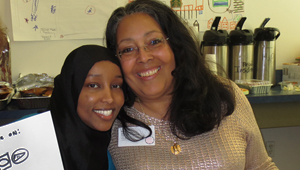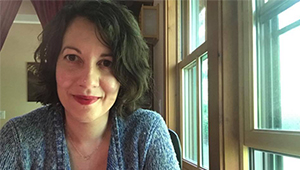What does ‘patient-centered, family-centered care’ mean?

Drs. Clarissa Hsu and Marlaine Figueroa Gray asked patients, caregivers, and physicians this question. Here’s what they learned.
Clarissa Hsu, PhD, and Marlaine Figueroa Gray, PhD, are assistant investigators at Kaiser Permanente Washington Health Research Institute (KPWHRI).
Drs. Hsu and Gray recently published a study that asked patients and caregivers to describe specifically what their health care teams do to make them feel they are getting patient- and family-centered care (PFCC). The results are in the open-access paper, "Actions and processes that patients, family members, and physicians associate with patient- and family-centered care," in BMC Family Practice.
Other authors are Lauren Murray, Marie Abraham, Wendy Nickel, Jennifer M. Sweeney, Dominick L. Frosch, Tracy M. Mroz, Kelly Ehrlich, Bev Johnson, and Robert J. Reid.
Drs. Hsu and Gray answered questions about the work and what health care researchers and innovators can learn from it.
Why did you study this topic?
Dr. Hsu: Health care that is more PFCC is linked to higher quality and greater satisfaction with care. That’s why many health care systems want to make their care more PFCC. However, this requires that everyone—including leadership and care teams—must be on the same page about the specific actions and processes to change to make patients and their families feel that care is focused on their needs.
Health care organizations and researchers also want to know what to measure when they evaluate and study interventions designed to improve PFCC.
Dr. Gray: To understand what good health care looks like, we asked people on the inside, those who give and receive care, including patients, family members, and physicians, to share their expertise with us.
How did you do the research?
Dr. Hsu: We wanted to hear what ideal care means to patients, family members, and physicians so we held nine focus groups with them. To get diverse perspectives, we recruited from the Dallas, Philadelphia, and Seattle areas.
Dr. Gray: We spoke with 92 participants: men and women of different racial and ethnic backgrounds and education levels and with a variety of insurance types including having Medicaid or being uninsured. The ages of our patients and family members were 20s to 70s. We included people who provided care for friends in the "family members" group.
Dr. Hsu: In the focus groups, participants shared stories about their outpatient experiences, including actions from physicians and care teams that they felt illustrated ideal patient-centered care. The participants—patients, caregivers, and doctors—were wonderful and talked honestly about what did and didn't feel like PFCC to them.
Dr. Gray: Back at KPWHRI, we closely read focus group transcripts and coded them—marking and noting what participants said—and identified themes in the resulting data.
Dr. Hsu: KPWHRI has strong expertise in qualitative research. We could write a whole blog about how we analyze qualitative data!
Our partners at the Institute for Patient- and Family-Centered Care in Maryland had previously defined four broad concepts that define PFCC: 1) dignity and respect, 2) information sharing, 3) participation, and 4) collaboration. We grouped the themes and actions we identified into those concepts.
What did you learn from the data and analyses?
Dr. Hsu: We generated a comprehensive list of PFCC actions. But clinical journal articles have a limited length, so we couldn’t provide examples of all the actions identified by our study participants. For this reason, we focused our article on actions that participants linked to PFCC in the dignity and respect concept, because it’s the most abstract and difficult to make concrete for care teams.
An example is building relationships with patients, which can seem pretty ambiguous. We were able to break that down into concrete actions such as listening and giving undivided attention and making personal connections using body language and eye contact.
Dr. Gray: Another example is respecting the time of patients and families by minimizing waiting times and informing people about delays. Patients, families, and practitioners all identified actions like these as making care more PFCC.
What conclusions do you hope readers will draw from your work?
Dr. Hsu: We summarize our findings in a table of specific actions associated with PFCC. We hope this tool helps people who design primary care improvement projects by giving them ways to make PFCC actionable and measurable.
Dr. Gray: Patients and family members are the experts on what PFCC looks like. Listening to them, and to the physicians and providers that care for them, can ensure that health care improvements address what matters most to those who receive care.
Dr. Hsu: Our ultimate goal is care that puts patients and families at the center, so we hope these results move us toward that goal.
We're also want to say that we’re grateful for funding from the Gordon and Betty Moore Foundation and the chance to collaborate with the American College of Physicians, the Institute for Patient- and Family-Centered Care, and the National Partnership for Women & Families.
Healthy Findings Blog

Co-designing health care with patients: A how-to guide
Dr. Clarissa Hsu writes about how her team equalized power between patients and staff in a quality improvement project
Recent news

Medical anthropologist Dr. Marlaine Figueroa Gray named assistant investigator
An expert in qualitative methods, she studies what matters most in patients' experience of health and illness.


